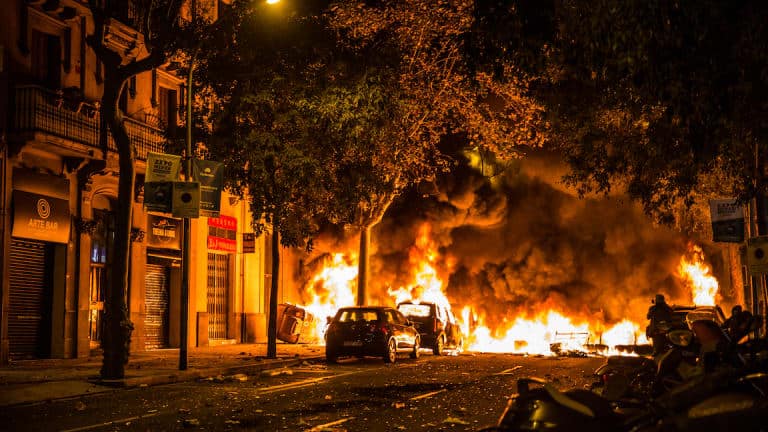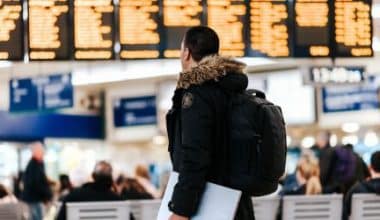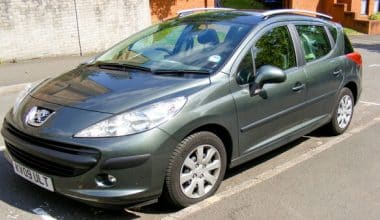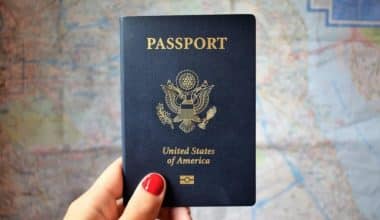As an experienced traveler, I’ve always been drawn to off-the-beaten-path destinations, where the excitement of the unknown meets the attraction of adventure. However, this brings with it the reality of traveling to places where safety is not always assured. The topic of which cities are the most dangerous in the world has crossed my thoughts several times, particularly while planning travels to places with volatile histories or ongoing wars. This essay looks into the world’s most dangerous cities, providing a comprehensive guide for individuals who, like myself, want to explore while still prioritizing safety.
Let’s walk through this together, beginning with a sobering look at the statistics and facts that distinguish these high-risk destinations.
Why are Some Cities So Dangerous?
Before getting into the list, it’s critical to understand what makes a city dangerous. High crime rates, political instability, economic disparity, and ineffective law enforcement all contribute to a city’s reputation as dangerous. However, these elements are not always apparent on the surface. Sometimes a city’s tourist districts appear to be quite safe, while other regions are plagued by violence and crime.
One of the most eye-opening events I had occurred in Caracas, Venezuela. The colorful streets and bustling marketplaces concealed the underlying tension. As I spoke with people, I heard about the city’s chronic violence, particularly in regions where visitors rarely visit. This encounter showed me that a city’s beauty may sometimes mask the ugly truths underlying it.
Which Are the Most Dangerous Cities in the World?
According to current statistics, the world’s most dangerous cities are frequently located in Latin America, a region plagued by gang violence, drug trafficking, and political instability. However, there are cities in other parts of the world that are quite dangerous. Below are the top ten most dangerous cities:
#1. Caracas, Venezuela

- Murder Rate: Caracas is frequently cited as the world’s most dangerous city, with a murder rate of around 111.2 per 100,000 people. Political instability, economic collapse, and widespread poverty have all contributed to alarmingly high crime rates in the city.
- Why it is dangerous: A collapsed economy, widespread corruption, and law enforcement’s incapacity to regulate crime have made Caracas a high-risk location. Kidnappings, armed robberies, and homicides are widespread, particularly in districts outside of popular tourist destinations.
#2. San Pedro Sula, Honduras

- Murder Rate: San Pedro Sula has a murder rate of approximately 51 per 100,000 residents, making it one of Central America’s most dangerous cities.
- Why it is dangerous: The city is a hotbed of drug trafficking and gang activity, particularly among notorious gangs such as MS-13 and Barrio 18. Violence in San Pedro Sula is typically harsh and indiscriminate, affecting both inhabitants and visitors.
#3. Tijuana, Mexico

- Murder rate: 134 per 100,000 residents, making it a notable city for high crime rates.
- Why it is dangerous: The city is a battleground for drug cartels, resulting in frequent violent confrontations. Despite being a popular tourist site due to its closeness to the United States border, visitors are frequently urged to stay in safer, more populous regions.
#4. Cape Town, South Africa

- Murder Rate: Cape Town is one of Africa’s most dangerous cities, with a murder rate of approximately 68 per 100,000 residents.
- Why it is dangerous: Cape Town is well-known for its natural beauty and cultural diversity, but it is also a city with significant economic disparity. Gang violence is prevalent in the townships around the city, and it frequently spreads to neighboring places.
#5. Acapulco, Mexico

- Murder Rate: Acapulco has a murder rate of 110 per 100,000 people, ranking high among the world’s most dangerous cities.
- Why it is dangerous: Drug traffickers have taken control of Acapulco, a formerly opulent resort area. The violence, mostly motivated by gang rivalry, has resulted in a dramatic drop in tourism.
#6. Ciudad Juárez, Mexico
- Murder rate: Approximately, its 85 per 100,000 residents.
- Why it is dangerous: One of the most dangerous cities in the world is Ciudad Juárez, which is well-known as a major drug trafficking corridor but has also experienced violence from rival cartels and other criminal activity.
#7. Natal, Brazil

- Murder Rate: Natal has a murder rate of about 75 per 100,000 people.
- Why it is dangerous: This coastal city in Brazil has experienced an increase in violent crime, including homicides, owing primarily to gang battles and drug and weapon trafficking.
#8. St. Louis, USA

- Murder Rate: St. Louis is the most dangerous city in the US, with a murder rate of 60 per 100,000 residents.
- Why it is dangerous: Poverty, drug addiction, and gang violence, especially in some communities, all contribute to St. Louis’ high crime rate.
#9. Salvador, Brazil

- Murder Rate: Salvador has approximately 54 murders per 100,000 residents.
- Why it is dangerous: Salvador, like many other Brazilian cities, experiences significant levels of violence due to drug trafficking, gang fighting, and socioeconomic inequality.
#10. Kabul, Afghanistan

- Murder Rate Although exact data differ, Kabul is well-known for its high rates of violence and terrorism-related occurrences.
- Why it is dangerous: Kabul is one of the world’s most dangerous cities, because of ongoing hostilities, frequent terrorist attacks, and political instability. The city is especially dangerous for foreigners, who are frequently targeted in attacks.
These cities, while dangerous, do include regions that are generally safe for travelers. However, utmost caution is urged when visiting these locations, and it is critical to be informed and take the appropriate procedures to protect your safety.
Why Are People Still Visiting These Dangerous Cities?
Despite the risks, several of these cities continue to draw tourists. The motivations vary: some are driven to the challenge of exploring high-risk destinations, while others travel for business or to reconnect with family. There’s also the truth that many dangerous cities contain tourist-friendly districts that may be visited without incident if the proper measures are taken.
I was surprised by the contrast between the safety of the tourist areas and the violence in the townships during my visit to Cape Town. Despite its dangerous image, the city’s magnificent landscapes and rich cultural past attract millions of visitors each year.
How Do You Stay Safe in Dangerous Cities?
If you’re thinking about visiting one of these high-risk areas, there are a few techniques you may use to reduce your risk:
- Research Thoroughly: Before traveling, learn about the city’s present circumstances. Understand which areas are safe and which should be avoided. The United States Department of State and other government websites frequently post up-to-date travel advice.
- Stay in Safe Areas: Reserve accommodations in well-known, safe neighborhoods. Luxury hotels or those with extensive security measures are frequently the best options.
- Avoid Night Travel: Many crimes take place after dark, so keep your activities to daylight hours. If you need to go at night, pick a trustworthy transportation service.
- Blend In: Avoid drawing attention to oneself as a tourist. Avoid wearing flashy clothes, jewelry, and accessories. Attempt to fit in with the locals as much as possible.
- Make a contingency plan: Know what to do in an emergency. Keep a list of local emergency numbers as well as your embassy’s contact information.
I recall my vacation to Tijuana, Mexico, a place known for its high crime rates. Regardless of all the warnings, I was determined to visit the city’s cultural landmarks. I stayed in safer, more crowded areas, avoiding nighttime travel, and hired a local guide to help me traverse the city’s streets. While there were some tense moments during the trip, these safeguards helped me stay secure while seeing Tijuana’s rich culture.
What to Avoid in Dangerous Cities?
When visiting high-risk areas, you must be aware of potential hazards and take precautions to reduce your chances of experiencing them. Here are seven crucial things to avoid in dangerous cities:
#1. Public Displays of Wealth
Thieves may target you if you wear flashy jewelry, fashionable clothing, or carry big amounts of cash. Displaying riches in cities with high crime rates might draw the attention of pickpockets, muggers, and organized crime groups.
Choose simple, non-descript apparel and accessories. Store pricey stuff away or leave them at home. To safely store cash and valuables, use a money belt or hidden bag.
#2. Unfamiliar Neighborhoods
High-risk cities frequently have localized areas with much higher crime rates. Tourists who are unfamiliar with the city may unintentionally stroll into these dangerous zones, resulting in unsafe encounters.
Before your travel, research the city to find out which neighborhoods are safe and which should be avoided. Stay in well-traveled, tourist-friendly locations, and consider hiring a local guide if you want to explore lesser-known parts of the city.
#3. Political Events and Protests
Protests and demonstrations in politically insecure areas can easily turn violent. Bystanders may be caught in the crossfire between law enforcement and protestors, or between opposing factions.
Stay up to date on the local political situation and avoid areas where protests or political rallies are likely to occur. If you find yourself near a protest, leave immediately to avoid being entangled.
#4. Traveling Alone
Solo travelers are frequently perceived as easy candidates for muggings, kidnappings, and other crimes. Being alone may also make it more difficult to seek assistance or protect oneself if something goes wrong.
Travel with a companion whenever possible. If you must travel alone, remain in densely populated regions, notify someone of your location, and communicate with friends or family regularly.
#5. Use Unlicensed Transportation
Unregulated transportation choices, such as unlicensed taxis or informal ridesharing, can be hazardous. These vehicles may not be dependable, and the drivers may have ulterior motives such as overcharging, theft, or worse.
Stick to the official transportation options offered by your hotel or trusted providers. Use applications like Uber or Lyft, and always double-check the license plate and driver information before getting into a vehicle.
#6. Nighttime Excursions
Many crimes in dangerous cities take place at night when the streets are less congested and police presence is diminished. Criminals are most active at night, targeting those who appear to be defenseless.
Limit your activities to daylight hours, when the roads are busier and safer. If you must go out at night, stick to well-lit, busy places and avoid lonely streets or alleyways.
#7. Carrying Too Much Cash
Carrying significant sums of cash raises the danger of theft, particularly in cities where pickpocketing and mugging are prevalent. If a thief observes you paying with a large sum of cash, you may become a target.
Carry only the cash you need for the day and keep it in a safe, inconspicuous location. Use credit or debit cards whenever feasible because they are safer and easier to replace if stolen.
By avoiding these hazards and taking proactive measures to keep safe, you can dramatically lower your chances of meeting danger while visiting high-risk areas. Traveling in dangerous cities necessitates caution, planning, and awareness; yet, with the proper safeguards, you can have a rewarding and safe experience.
Are There Any Benefits to Visiting Dangerous Cities?
While it may appear contradictory, there are some advantages to visiting cities known for their danger. These cities frequently boast rich cultural history, lively local communities, and one-of-a-kind experiences. Tourism also improves the local economy, which helps to sustain populations dealing with poverty and crime.
However, it is critical to balance these benefits with the hazards. As someone who has been to multiple high-risk destinations, I can attest that the benefits can be significant, but so can the risks. It is critical to be well-prepared and knowledgeable before starting on such an adventure.
Travel Safety Checklist for High-Risk Cities
Before your trip:
- [ ] Research current safety conditions in your destination
- [ ] Register with your country’s embassy or consulate
- [ ] Purchase comprehensive travel insurance
- [ ] Make copies of important documents (passport, visa, etc.)
- [ ] Learn basic phrases in the local language
- [ ] Save emergency contact numbers
During your stay:
- [ ] Stay aware of your surroundings at all times
- [ ] Keep valuables in a safe place
- [ ] Use reputable transportation services
- [ ] Avoid walking alone at night
- [ ] Don’t display expensive items or large amounts of cash
- [ ] Trust your instincts – if a situation feels unsafe, leave
In case of emergency:
- [ ] Know the local emergency numbers
- [ ] Have a plan to contact family or friends back home
- [ ] Know the location of your country’s embassy or consulate
Key Takeaways
- Dangerous cities frequently have high crime rates, political instability, and economic disparity, making them high-risk locations for visitors.
- Conducting extensive research, staying in safe locations, and avoiding nighttime travel are critical considerations for remaining safe in these cities.
- Blending in with locals can lower your chances of becoming a target for crime.
- Despite the dangers, these cities frequently have significant cultural and historical attractions that continue to attract tourists.
Conclusion
Exploring the world’s most dangerous cities may be exciting and eye-opening. While these sites carry risks, they also provide unique experiences that cannot be found elsewhere. Knowing the risks and being well-prepared could mean the difference between a fantastic trip and a risky mistake, whether you’re traveling out of necessity or out of a sense of adventure.
Are you prepared to explore high-risk places, or will you stick to safer paths?
- TURKS AND CAICOS TRAVEL REQUIREMENTS
- TRAVEL MANAGEMENT SOFTWARE.
- CORPORATE TRAVEL MANAGEMENT COMPANIES
- BEST TRAVEL INSURANCE COMPANIES OF 2023
- How to Become a Travel Agent Without Experience (Detailed Guide)






